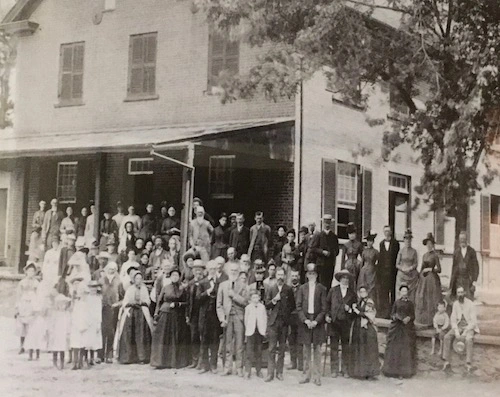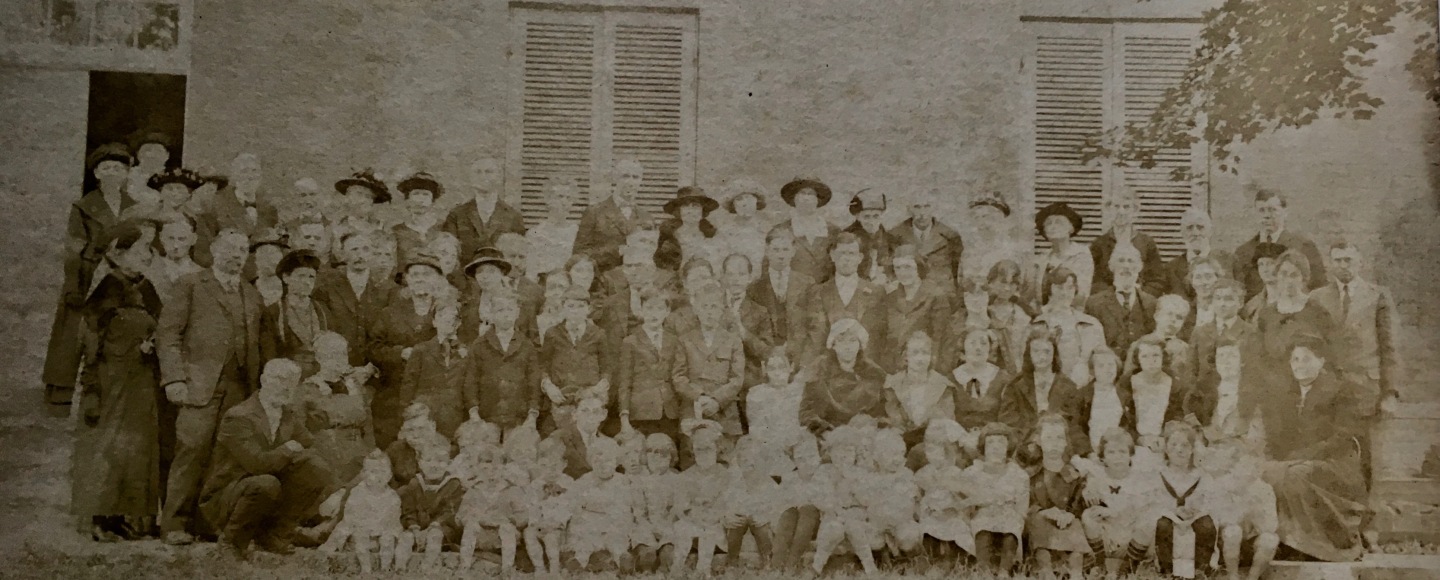
Further information on topics covered in Nest of Abolitionists can be found on various websites, Loudoun county court records, and research libraries, as well as in personal collections. If you have compatible websites to suggest to Nest of Abolitionists readers, please pass that information along, and I will link to those sites.
For general information on the Lincoln, Virginia story, the Lincoln Preservation Foundation website casts a broad net over the community’s history.
Wide ranging information about life in 19th century Loudoun County can be found on the website History of Loudoun County. This site is frequently updated, and is run by Loudoun County historians, covering everything from roads, farming, war history – you name it.
Goose Creek Meeting, spiritual home of the men and women discussed Nest of Abolitionists maintains a welcoming website.
The Black History Committee at Thomas Balch Library has a long history of honoring, protecting, and researching the men and women of color who lived in northern Virginia. Their website adds much to anyone’s understanding of the experiences of both the enslaved and free blacks during the decades covered in Nest of Abolitionists.
Loudoun County has an exceptional Historic Records and Deeds Office at the Leesburg, VA Courthouse. The office is run by Gary M. Clemons, Clerk of the Circuit Court, and his expert staff. Much of the information found on Nest of Abolitionists came from Historic Records and Deeds legal documents.
Mosby Heritage Area Association is a northern Virginia based non-profit organization dedicated to both local history and rural protection and conservation efforts. Their website has information about many topics that affected the Quakers living in Loudoun county: Revolutionary War, War of 1812, Civil War, and Mosby Heritage Area Association even dedicates website pages to the Quakers themselves, as well as the Underground Railroad.
The U.S. National Park Service works to preserve Underground Railroad sites through their Network to Freedom program. Information about Loudoun County histories of Nelson Talbott Gant and Leonard Grimes can be found on the site. Hallowed Ground also has information about both Nelson Gant and Leonard Grimes, as well as other African-American history in Loudoun County.
Janney descendants Asa Moore Janney (1908-2002) Werner Janney were great-nephews of Samuel M. and Elizabeth Janney. The two brothers wrote two slim, insightful books about Loudoun County Quakers. In 1973 they published The Composition Book: Stories from the old days in Lincoln, Virginia. In 1980, they followed up with Ye Meetg Hous Small A Short Account of FRIENDS in LOUDOUN COUNTY, VIRGINIA 1732-1980. The books are both full of anecdotes and family history of Loudoun County Quakers, including people studied on this website.
The Quaker village Waterford, Virginia is eight miles from its sister community of Lincoln. The Waterford Foundation is where to turn for all information on the beautiful, protected village. Waterford has inspired pre-eminent historians, first among them currently active is Bronwen Souders. She has gathered elusive documents, organized court records, and is unafraid to reach into the darker corners of the decades leading up to Civil War. Several transcriptions of papers used on Nest of Abolitionists is from work done by Bronwen, she is an inspiration for many researchers interested in Southern Quaker history, including myself.
John Souders and Taylor Chamberlin wrote a wonderfully engaging book, encompassing the conflict Loudoun County Quakers experienced during the Civil war. Between Reb and Yank, a Civil War History of Northern Loudoun County, Virginia was published in 2011. It is a necessary book. “To Talk is Treason” Quakers of Waterford, Virginia on Life, Love, Death, and War (1996) was collaboratively written by John Souders and Bronwen Souders along with fellow famed historian and mentor John Divine.
Historian, lecturer and author Dr. Deborah A. Lee has devoted much of her career to researching slavery in Virginia, Maryland and the mid-Atlantic region. She is expert on two Loudoun County freedmen who gained national prominence in the mid-19th century: Leonard Grimes, Underground Railroad conductor, and Nelson Gant, who kidnapped his enslaved wife to take her to freedom. Dr. Lee’s work can be tracked online, as well as in research libraries such as Thomas Balch Library.
An excellent report on Lincoln’s community effort to establish a school for African American students after the war’s end in April 1865 has been done by historian and project director, Larry Roeder, Jr. His report is here. He is responsible for turning long overdue attention to the history of Freedmen’s schools and the subsequent growth of segregated public schools through his work The Edwin Washington Project: Documenting Segregated Schools in Loudoun County
Current research is being done by Dr. Sheri Heurta, Dr. Jenny Masur, Mary Robare, Maddy McCoy, Lori Kimball, Deb McCauslin…a modern ‘nest of abolitionists’ and indefatigable researchers. The study of the Underground Railroad, Quaker involvement in the anti-slavery movement, and first and foremost, the enslaved men and women who risked everything to achieve dignity, liberty and self-determination, has no finer proponents than the historians mentioned above. It is a big topic that rewards every researcher with meaningful discoveries.
Manisha Sinha writes extensively on the topic of abolitionism, and gives context to the era studied in Nest of Abolitionists. Samuel M. Janney is mentioned in her book, The Slave’s Cause, A History of Abolition, as well as other Quakers active in the abolitionist movement.
Samuel McPherson Janney wrote biographical books about Society of Friends’ founder George Fox and William Penn, as well as books focused on Quaker faith. Toward the end of his life Janney wrote the Memoirs of Samuel M. Janney, published posthumously in 1881. Janney’s Memoirs go into some detail about his 1849 arrest for “speaking and writing …that Masters have no right of property in their slaves.”
The Library of Virginia has documents pertaining to both Samuel McPherson Janney and his wife Elizabeth Janney. The library’s Janney collection also contains several items associated with fellow Quaker William Tate.
Several Lincoln area Quakers donated family photographs, letters, and papers to Swarthmore College. Those items are held in Swarthmore’s Friends Historical Library. The Library’s website has extensive information online about Abolitionism, the Underground Railroad, and various prominent Quakers, such as Samuel M. Janney.
Ancestry.com has online access to many historical Society of Friends Meeting minutes, including Goose Creek Meeting. Several biographies included on the Nest of Abolitionists’ website include scanned documents from the Quaker records on the ancestry.com. Online documents include marriage records, burial records, disunity, and more. Those records can be accessed by Ancestry.com subscribers through this link: Ancestry.com Quaker records
Bryn Mawr College has an extensive and informative website, Quakers & Slavery. The site answers many questions about the historical connection between Quakers and their long wrestle with slavery. The timeline found on the Quakers & Slavery website is a useful guides for navigating issues Lincoln Quakers were addressing.
Some specific documents associated with the individuals researched on Nest of Abolitionists can be found at various locations listed below:
The Carolyn Taylor letter to sister Hannah Stabler 1864 is located in the Taylor folder of papers and letters held at Thomas Balch Library, Leesburg, Virginia. The Balch Library site pertaining to various Taylor papers is here.
Better understanding of the years following the civil war’s end in 1865, as experienced in Loudoun County by newly freed black men, women and children, can be learned from Betty Morefield’s essay, “The Freedmen’s Bureau in Loudoun County, Virginia: Getting Started, June 1865 – March 1866.” Morefield documents some of the difficulties newly freed blacks experienced, including their attempts to open schools. Eliza Janney Rawson and Elizabeth Janney were involved in those efforts, and devoted decades of their lives to education. The Freedmen’s Bureau in Loudoun County essay is published in The Bulletin of the Loudoun County Historical Society 2007 Edition, available from Thomas Balch Library, Leesburg, VA.
Edward Hicks has only a periphial role in the history of Goose Creek Meeting Society of Friends. However, his attachment to Goose Creek Meeting is by no means inconsequential. There are many good sources on Edward Hicks’ life, including the straightforward biography on the Wikipedia Edward Hicks page. A more in depth analysis of Hicks and his artistic motives and ministry is found in Edward Hicks: Painter of the Peaceable Kingdom by Alice Ford (Philadelphia, 1952) as well as an article written by the same author in The Bulletin of Friends Historical Association, Vol. 50 Spring 1961 No. 1
Francis H. Ray lived a short but meaningful life. Part of what we learn about him came from The Chatham Press June 2010 issue. The newspaper article from National Era, describing events that took place at the public meeting can be found at Accessible Archives website.
